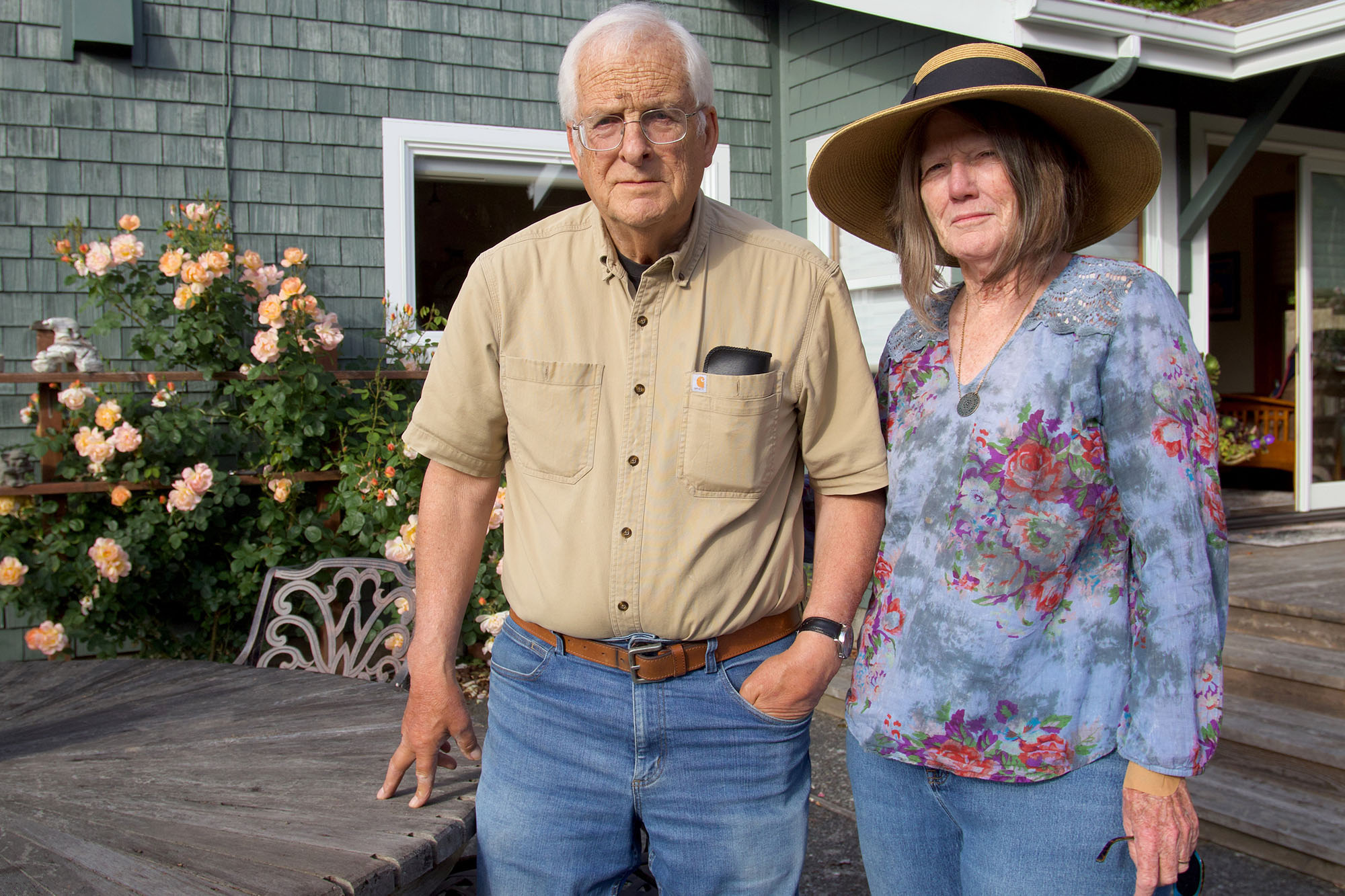The firefighters call them “lines of sorrow” — the stark boundaries separating neighborhoods obliterated by wildfires from adjacent buildings that were left unscathed. Here in my Northern California community, Santa Rosa, lines of sorrow are all around, mapped by 50 mph wind gusts. The lines determined whose lives were shattered, whose careers were derailed, and whose life plans must be rewritten. Across the region, thousands of people on the wrong side of these lines became homeless or unemployed — or both — over a few terrifying hours and days in early October.
Even now, more than a month after the last flames were snuffed out, it’s hard for our community to fathom what has happened. I’ve lived in Santa Rosa for 25 years, and I can honestly say it feels like a different place now. No area or group, including our health care community, was immune. Many people are now trying to find their bearings and come to terms with a changed reality.

My family was affected by the Tubbs Fire, a fast-moving, devastating inferno. My husband and I were out of town when the fire started, and we spent the next nerve-wracking day wondering whether our 24-year-old son had been swept up in it. When we finally learned that he was safe after evacuating in the middle of the night with only moments to spare, we were so relieved that we felt that the fate of our house and possessions didn’t really matter. That was just as well, because our house burned to the foundation. When we returned to the place to see what remained, little was recognizable — the metal frame from our piano, and some pots, pans, and crockery scattered among the ashes.
So many others experienced deep losses, including health professionals and support staff at the crucial community clinics that make up the Redwood Community Health Coalition (RCHC), a network of 17 community health centers for underserved and uninsured people in Marin, Napa, Sonoma, and Yolo Counties. RCHC binds the health centers together into a network of care, creating economies of scale for joint projects that further their mission. We provide forums for the sharing of information among the health centers, host trainings on clinical and operational topics, house a health information exchange, and support health center quality improvement and clinical transformation.
Double Worries
Before the fire, the health centers’ mission of providing high-quality care to residents with low incomes was already strained by the shortage of providers, and then an estimated one in six doctors in Santa Rosa lost their homes. As rent and purchase prices skyrocket after the fires, we are now doubly worried about the region’s health care system and the patients served by affected health centers. Many residents — both providers and patients — may not be able to remain in the area because of the rising cost and diminished supply of shelter.
These include dozens of health center providers and staff whose homes burned even as they leapt into action like the first responders they are. When Dr. Danielle Oryn, chief medical officer at Redwood Community Health Coalition and a physician at Petaluma Health Center, heard that nearby hospitals were evacuating, she and her colleagues in the medical community did not hesitate.
“The magnitude of it was unbelievable. At 3 AM that first night, we began calling all staff to come in to begin responding. Staff from all RCHC member health centers were in early, opening whatever sites they could possibly open, and health center providers went out to treat evacuees at the shelters closest to them. It was critical that we were all there to take care of the medically fragile patients who were being evacuated from skilled nursing facilities, emergency rooms, and assisted living. In those first few days, they provided some miraculous health care. It was a real coming together in the medical community — everybody bringing what they could, when they could, to take care of people.“
“Santa Rosa Community Health staff were amazing. The fire disrupted their whole operation, but they still rallied. Their health center staff were working on the front lines despite having themselves suffered profound losses and despite the fact that their biggest clinic, Vista, was evacuated and is now ruined. Under the leadership of their CEO, Naomi Fuchs, the staff continues to be at the center of caring for the community and coordinating recovery efforts.”
The North Bay has always been a conscientious community, but the way people are coming together is remarkable. There is a kind of selflessness right now and a blossoming sense of the community pulling itself together to support each other and recover and rebuild. Even weeks after the fires were put out, I witness daily acts of kindness and generosity.
Harnessing Community Spirit
While it is hard to see the way forward right now, we hope we can hold on to this spirit. We want to learn from these hard lessons. We need to use them to create a regional emergency plan to ensure we are more prepared for the next disaster and to help other communities benefit from the lessons we’ve learned about responding to this kind of mass disaster.
We also have immediate needs. Our health centers need to replace damaged infrastructure and rebuild the ruined Vista Campus in Santa Rosa. We need to care for displaced patients, build resources to address community trauma, and think about how we can support our health care workforce. Our communities are expecting a significant increase in need for mental health services for the foreseeable future. All these growing needs will require a community-wide response that goes hand-in-hand with any regional strategy for rebuilding destroyed neighborhoods and businesses. Health centers in the fire-affected zone suffered losses of facilities and revenue that will count in the many millions once the final numbers are tallied. Our hearts go out to our colleagues in Southern California as they respond to new wildfires in Ventura, Los Angeles, and other regions. They are taking the same unwanted journey we just embarked upon.
We ask our allies and elected officials to support the Sonoma County, Napa Valley, and Mendocino areas that have been devastated by wildfire, as well as those Southern California communities currently being affected. Please share the powerful message that our health centers play an essential role in supporting the community at this critical time — the same role that community health centers play throughout California and the United States. RCHC’s member health centers have been trusted partners and providers in our communities for many years, and we plan to be around for many years to come.
You can help impacted Northern California health centers in the fire-affected areas by contacting Redwood Community Health Coalition at sshupe@rchc.net or by contacting any one of our member health centers.
Authors & Contributors

Suzie Shupe
Suzie Shupe, CEO of Redwood Community Health Coalition since March 2015, is an attorney, advocate, and former First 5 Sonoma County commissioner. Shupe has for decades followed her interest in health policy and advocacy in pursuit of improved social services and health care in Sonoma County and at the state level. She serves as a managing partner for CHCF’s California Improvement Network.
Shupe is a graduate of Barnard College of Columbia University and UCLA School of Law.





